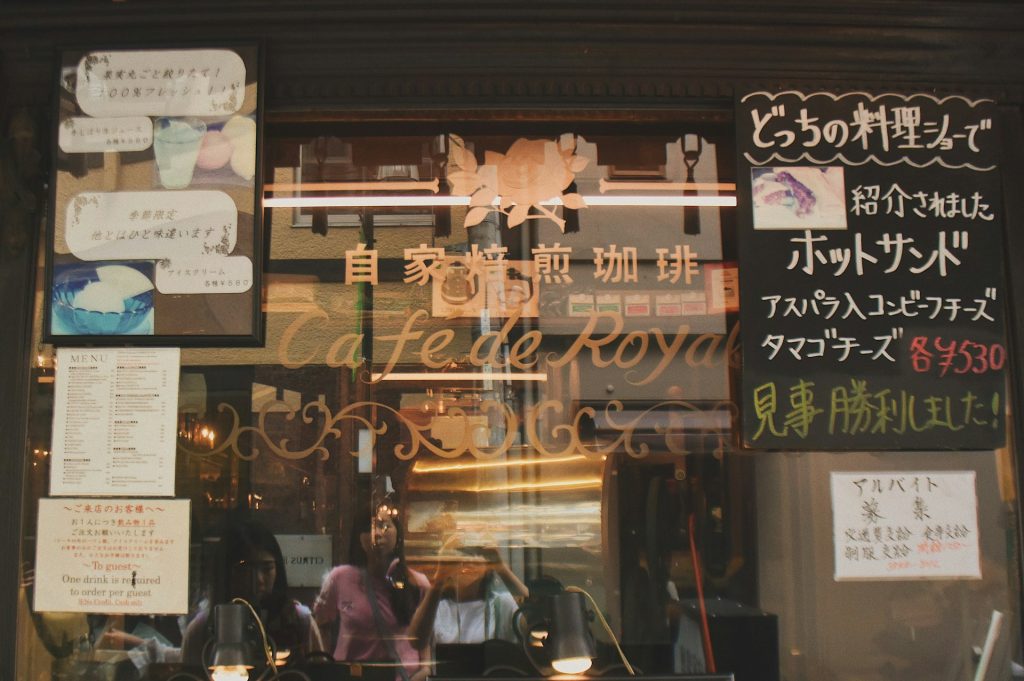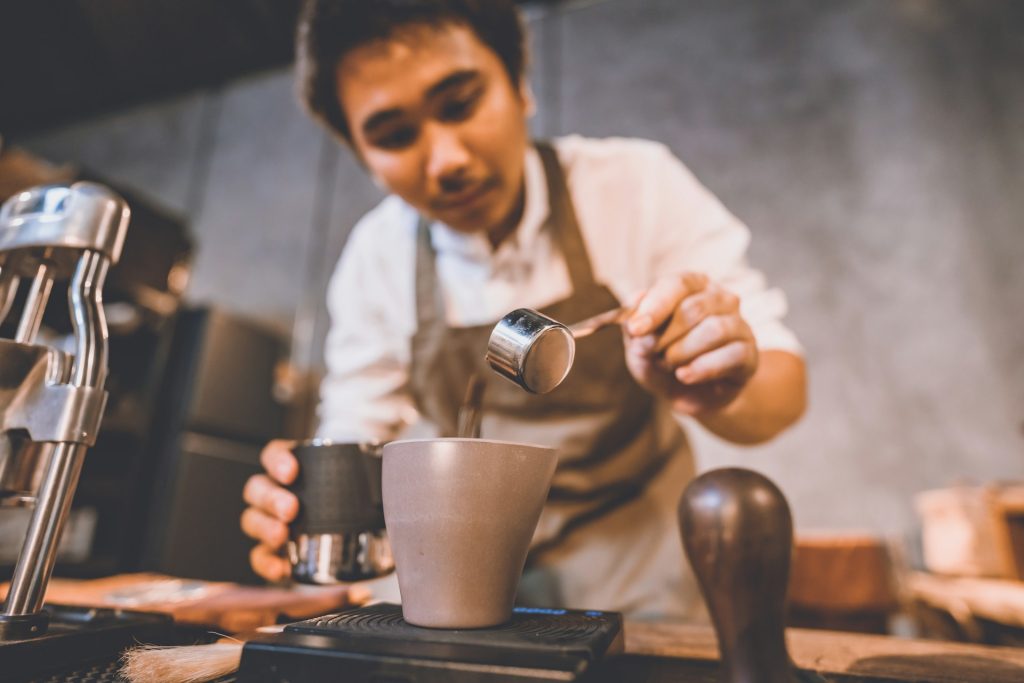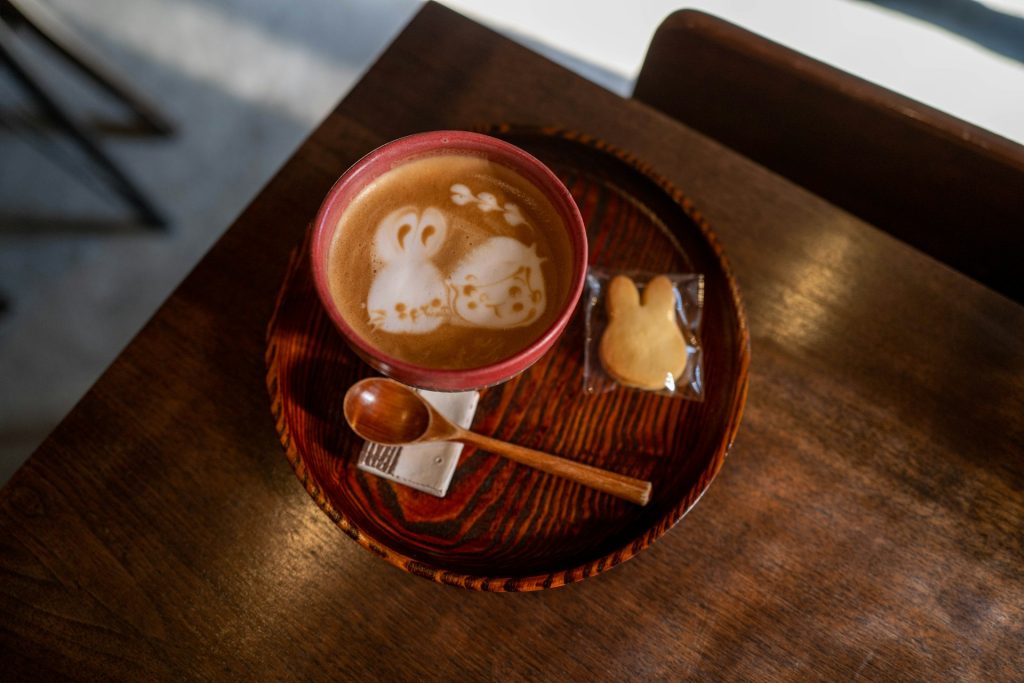Table of Contents
Ever picture Japan’s coffee scene and immediately think of those colorful vending machines on every street corner? It’s true that you can grab a canned brew just about anywhere, but there’s a whole world of coffee culture hiding behind the neon lights and bustling train stations. If you love coffee and you’re curious about finding something more than a quick canned latte, keep reading.
The Kissaten Tradition
Many visitors to Japan have never heard of a kissaten, yet these old-school coffee shops are the beating heart of Japan’s coffee history. Picture a cozy, dimly lit space with wooden furniture, maybe some stained-glass lamps, and the aroma of freshly ground beans wafting through the air. Kissaten (sometimes written as “喫茶店”) often serve simple dishes like toast, sandwiches, or cake alongside meticulously brewed coffee.
What sets a kissaten apart is the care put into each cup. It’s not unusual for the owner to roast beans in-house or use specialized tools like siphons to achieve the perfect extraction. While the décor might feel retro—think 1970s wallpaper and classical music—the experience is timeless. You can settle into a comfortable seat, watch the barista at work, and soon find yourself sipping a coffee that’s uniquely Japanese in both flavor and presentation.
If you want an insider tip, look for kissaten that have been around for decades. They’ve likely perfected their craft through generations. And don’t be surprised if the menu includes something quirky like “Viennese Coffee” topped with whipped cream or a “Japanese-style” black coffee. The variety reflects how coffee arrived in Japan, adapted over time, and found its own identity.
Third-Wave Cafés in Tokyo

If you’re more of a modern coffee geek, you’ll find plenty of third-wave coffee spots in Tokyo and beyond. These cafés focus on single-origin beans, precise brewing methods, and often minimalistic designs that let the coffee speak for itself. Owners might have studied coffee culture in places like Australia or the United States, then returned home eager to create something innovative for Japanese customers.
Step into one of these sleek cafés, and you might see a pour-over bar with various drippers lined up, an espresso machine front and center, and baristas who chat enthusiastically about roast profiles. Some shops rotate their bean selections frequently, letting you explore different flavor notes from around the globe. It’s a far cry from the sweet canned coffees you can buy in convenience stores—and a strong sign of how Japan’s coffee scene keeps evolving.
You’ll find many of these cafés in Tokyo’s trendier neighborhoods like Shibuya, Shimokitazawa, or Kiyosumi-Shirakawa. But it’s not limited to the capital. Cities like Kyoto, Osaka, and Fukuoka also host vibrant specialty coffee communities. If you’re traveling around, consider making coffee spots part of your itinerary. You can chat with baristas, pick up local beans as souvenirs, and taste a side of Japan that many tourists miss.
Vending Machines vs. Craft Coffee
Japan’s vending machines are legendary, offering a mind-boggling range of canned beverages—coffee included. In winter, you can snag a hot can; in summer, a cold one. These machines are a marvel of convenience, and many locals do rely on them for a quick caffeine boost. But once you’ve tried a can or two, you might realize they’re more about novelty than depth of flavor.
That’s why the real coffee gems in Japan lie beyond the vending machine hype. While it can be fun to grab a Boss Coffee or Georgia for the novelty (a quick snapshot for Instagram, perhaps), you’ll soon find yourself craving something richer. That’s where the kissaten or third-wave cafés come into play.
Ironically, these two worlds—the instant gratification of canned coffee and the slow, careful ritual of hand-brewed coffee—exist side by side. It’s a testament to Japan’s ability to merge modern efficiency with artisanal tradition. So yes, try a vending machine coffee once, just to say you did. But then move on to the more rewarding experiences waiting in small shops and quiet neighborhoods.
The Rise of Specialty Roasters
In the past decade, Japan has seen a boom in specialty roasters who source beans directly from farmers, focusing on transparent supply chains and careful roasting profiles. These roasters often set up small storefronts where you can watch them work their magic behind glass walls, turning green beans into aromatic wonders.
What makes these roasters special is their attention to detail. They might experiment with lighter roasts that highlight fruity or floral notes—something that resonates with Japanese palates, which often prefer subtlety over strong, bitter flavors. They may also hold tasting events or workshops, letting customers learn the differences between beans from Ethiopia, Colombia, or Guatemala.
If you’re exploring Tokyo, look for neighborhood roasters in places like Kanda, Nakameguro, or Koenji. Outside Tokyo, keep an eye out for local bean shops in areas like Kyoto’s Gion district or Yokohama’s bayside neighborhoods. Each place has its own twist, and discovering them can feel like a treasure hunt through Japan’s evolving coffee landscape.
Latte Art and Foam Mastery

You might think Italy or Australia are the main stops for gorgeous latte art, but Japan can hold its own. Many cafés take foam designs to the next level, shaping 3D forms of cats, bears, or even anime characters perched on top of your latte. Sure, it’s a bit whimsical and sometimes leans more on fun than pure coffee artistry, but it’s a delightful surprise nonetheless.
Latte art contests are also on the rise, where baristas showcase extraordinary talent. Some events even incorporate elements of Japanese pop culture, such as anime-themed latte art. If you’re lucky enough to visit during one of these competitions, it’s a great opportunity to see just how creative coffee can get when tradition meets pop flair.
Seasonal Coffee Trends
Japan is famous for limited-time products and seasonal specials, and coffee is no exception. From sakura-flavored lattes in the spring to sweet potato or chestnut-infused blends in the fall, Japanese cafés love experimenting with flavors that match the current season. These offerings can be hit or miss, but they add a sense of novelty that keeps people coming back.
Some big chains roll out new drinks every month, each with eye-catching posters and a steady stream of social media buzz. If you’re the kind of person who loves trying new things, these seasonal creations might be right up your alley. And if you’re more of a purist, you can always stick to a classic hand drip or espresso. There’s room for both approaches in Japan’s ever-widening coffee scene.
Finding Your Perfect Cup

Whether you’re drawn to the nostalgic vibe of a kissaten, the modern flair of a third-wave café, or the whimsical foam art served in a manga-themed spot, Japan has something for every coffee lover. The hardest part might be deciding where to start. If you have limited time, make a short list of must-visit shops. But don’t be afraid to wander down side streets, either. Some of the best finds come from stumbling upon a tiny store with a handwritten sign announcing “hand-drip coffee.”

I’m Audrey, a dedicated mother of teenagers with an insatiable love for coffee. On BeanBrewLove.com, I intertwine my need for caffeine with reflections on life. Whether expressing a nostalgic sentiment or injecting a hint of sarcasm, my blog is a reservoir of coffee culture, brewing techniques, and global coffee reviews.




